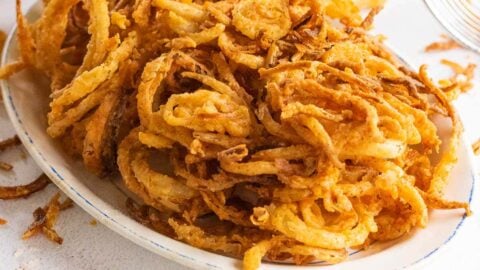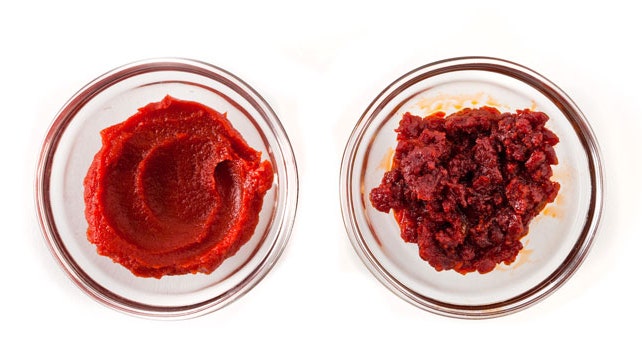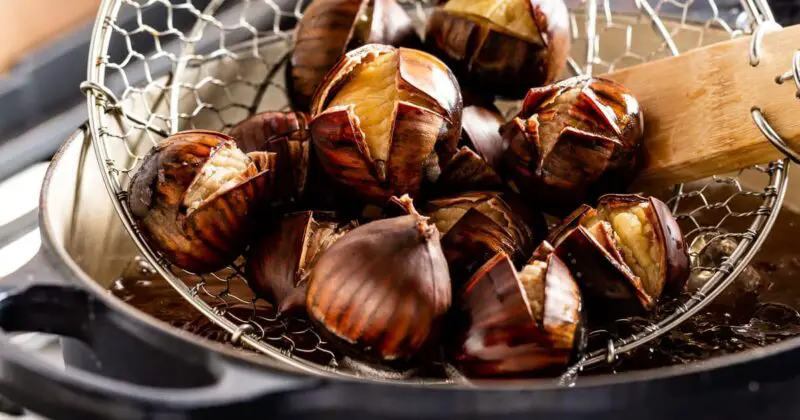Introduction
Have you ever found yourself in the middle of making a recipe only to realize that you don’t have any fried onions? Or maybe you’re looking for a healthier alternative to this popular ingredient. Whatever the reason, there are several substitutes that you can use instead. In this article, we’ll explore some of the best options available to you.
Dried Onion Flakes
Dried onion flakes are simply dehydrated onions that have been chopped into small pieces. They have a similar flavor to fried onions but lack the crispy texture. Dried onion flakes can be found at most grocery stores and are often used as a seasoning or added to soups and stews.
Benefits: Dried onion flakes have a long shelf life and can easily be rehydrated with some water before using them in a recipe. They also contain fewer calories than fried onions.
Drawbacks: The lack of texture may not be ideal for some dishes, and the taste can be slightly more potent than fried onions.
Suggestions: Dried onion flakes are perfect for adding flavor to dips, dressings, and casseroles. Try sprinkling them on top of baked potatoes or mixed into your favorite meatloaf recipe.
Caramelized Onions
Caramelized onions are made by cooking sliced onions low and slow over heat until they become brown and soft. They have a sweet, nutty taste that pairs well with savory dishes.
Benefits: Caramelized onions add depth of flavor to your dish and are great for French-style recipes like quiches or tarts. They’re also naturally low in fat and calories.
Drawbacks: Caramelizing onions can take up to 45 minutes, so it’s not ideal if you’re short on time. Additionally, they may not have the same crunchy texture as fried onions.
Suggestions: Try using caramelized onions in place of fried onions on a sandwich or burger. They’re also great mixed into stuffing or vegetable side dishes.
Shallots
Shallots are a type of onion that have a milder flavor than traditional onions. They have a slightly sweet taste with a slight hint of garlic.
Benefits: Shallots can add an extra layer of complexity to your dish without overpowering it, making them perfect for adding a subtle onion flavor. They’re also low in calories and high in vitamin C and potassium.
Drawbacks: Shallots can be more expensive than regular onions, and they may not provide the same crispy texture as fried onions.
Suggestions: Use shallots in dressings and marinades or sauté them with vegetables. They’re also great when added to scrambled eggs or omelettes for breakfast.
Scallions or Green Onions
Scallions, also known as green onions, are young onions that have not yet formed a bulb. They have a mild, slightly sweet taste with a faint onion flavor.
Benefits: Scallions are low in calories and high in vitamins A and C, making them a healthy alternative to fried onions. They also add color and freshness to your dish.
Drawbacks: Scallions do not have the same crispy texture as fried onions, so they may not work as well as toppings for dishes like casseroles or green bean casserole.
Suggestions: Use scallions as a garnish or sprinkle them on salads for extra crunch. They’re also great in stir-fry dishes or mixed into mashed potatoes.
Onion Powder
Onion powder is made from dehydrated onions that have been ground into a fine powder. It has a strong onion flavor and can be used in place of fresh or fried onions.
Benefits: Onion powder has a long shelf life and is easy to use. It’s low in calories and provides the same flavor as fresh onions without the added moisture.
Drawbacks: Onion powder does not provide the same texture as fried onions, so it may not work well as a topping for certain dishes.
Suggestions: Use onion powder to season meat dishes or sprinkle it on top of roasted vegetables. It’s also great for adding flavor to soups and stews.
Crispy Bread Crumbs
Crispy bread crumbs can be used as an alternative to fried onions on top of casseroles, salads or baked potatoes. These are generally used by people who don’t consume fried food often.
Benefits: Using crispy breadcrumbs can be an easy way to create extra crunch to any dish without using deep-fried onions. Additionally, it’s gluten-free which is friendly to those who avoid gluten.
Drawbacks: It may not taste the same or provide enough flavour compared to fried onion toppings
Suggestions: Get store-bought crispy bread crumbs or make your own by baking freshly made breadcrumbs with olive oil seasoned with your preferred spices, keeping an eye out for them while baking to prevent going overboard in terms of crispiness . Sprinkle over salads, casseroles and much more
Homemade Fried Onions
If you’re looking for a more natural version of fried onions, try making them at home instead of buying store bought.
Benefits: You have more control over the ingredients and can also adjust the level of crispiness to your preference.
Drawbacks: Homemade fried onions can be time-consuming to make as it requires frying in batches, and it’s not very healthy. Also, being able to achieve the same texture at home with limited resources may be challenging.
Suggestions: To make homemade fried onions, thinly slice an onion and dust with cornstarch. Heat oil in a frying pan until it shimmers and add the onion slices in small batches. Cook for around 3 minutes or until crispy, drain excess oil on a paper towel-lined tray. Store in an airtight container once cooled.
Other alternative options
If you have specific dietary requirements, there are several other alternatives available to you such as tofu, mushrooms or crispy chickpeas.
For example, mushrooms can provide a similar meaty flavor to a dish that fried onions typically do. If using tofu, press it and cut into thin slices like onions and marinate with soy sauce before battering for a meat-free version of a dish. Crispy chickpeas as a topping adds some extra crunch and protein that is required by everyone now and then.
Conclusion
A variety of ingredients can be used instead of fried onions on top of dishes or mixed in with them. Each has its benefits and drawbacks depending on the taste and texture required for the particular dish.
From dried onion flakes to caramelized onions or crispy bread crumbs, there is always an alternative option for every dietary requirement or preference. Don’t be afraid to try something new – you might just find your new favorite ingredient
Remember each substitute varies greatly hence it’s recommended to experiment one at a time to find your perfect match. So go ahead and use these alternatives to get the flavor you desire in your dishes without compromising on health or taste.
Frequently Asked Questions
1. Can I use caramelized onions as a substitute for fried onions?
Absolutely! Caramelized onions are a great alternative to fried onions, and they’re easy to make. Simply slice your onion thinly, sauté in olive oil until caramelized, and sprinkle on top of your dish for a delicious crunch.
2. What about using crispy shallots instead of fried onions?
Yes, you can definitely substitute crispy shallots for fried onions. Shallots have a milder flavor than onions and are delicate in texture, but they still provide that satisfying crunch. To make crispy shallots, slice them thinly and fry in hot oil until golden brown.
3. Can I use crushed cornflakes or breadcrumbs instead of fried onions?
Yes, you can certainly use crushed cornflakes or breadcrumbs as a coating for chicken or fish instead of fried onions. They will provide a crunchy texture and can be seasoned to your liking.
4. Are there any healthy alternatives to using fried onions?
Absolutely! You can try using roasted vegetables like sweet potatoes or squash as a topping for your dishes. They will add a natural sweetness and provide the crunch you’re looking for without the added fat from frying. Another option is to sprinkle chopped nuts like almonds or cashews on top of your dish for a healthy, nutty flavor profile.







